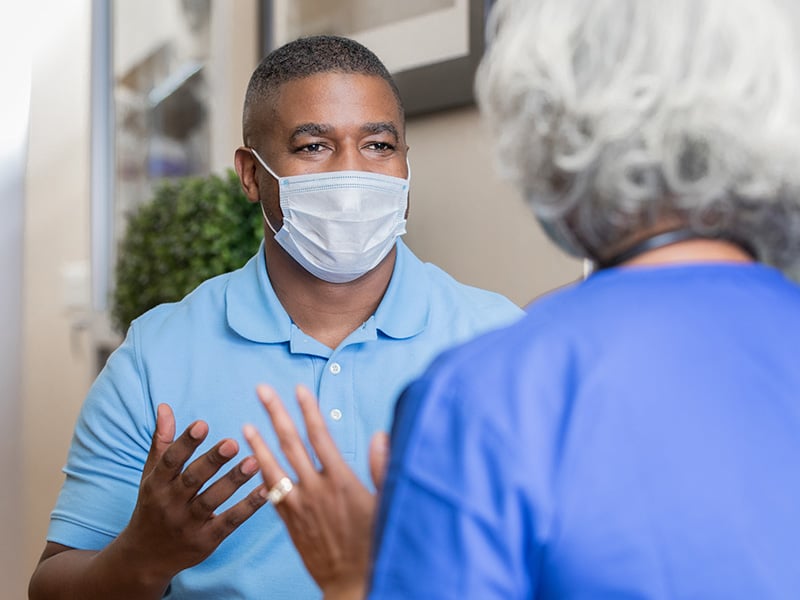Exceptional Gastroenterology Care
Our Rochester Regional Health gastroenterologists, hepatologists, and other specialists work together to provide advanced preventive, diagnostic, and treatment options for conditions affecting the digestive system- including the stomach, intestines, colon, pancreas, liver, and esophagus. We partner with our patients to determine the best diagnostic or treatment option for them through our key programs listed below.
Gastroenterology Providers Near You
Common Gastroenterology Procedures
Our expert physicians work together to provide advanced treatment options for conditions affecting the digestive system, including the stomach, intestines, colon, pancreas, liver, and esophagus. Some of our most common procedures are explained below.This outpatient diagnostic procedure allows your doctor to view images of your esophagus and stomach to pinpoint the cause of unexplained symptoms like vomiting, abdominal pain, difficulties swallowing, gastrointestinal bleeding, or identify any abnormalities or damage in your stomach, esophagus, and beginning of the small intestine, such as ulcers, polyps, infection, inflammation, or damage from gastroesophageal disease (GERD).
A colonoscopy is both a diagnostic and preventive procedure that can identify changes in your large intestine, colon, and your rectum. These changes can indicate the presence of disease that affects your gastrointestinal health, including colon cancer.
View Standard Prep Instructions
In an ERCP procedure a dye is injected into your bile and pancreatic ducts using a flexible, video endoscope. Then, X-rays are taken to outline the bile ducts and pancreas. An open channel in the scope allows other instruments to be passed through it to perform biopsies, inject solutions, make incisions, or place stents. ERCP helps in diagnosing and treating conditions of the bile ducts, gallbladder, and pancreas.
ERCP may be used for:
- Gallstones, which are trapped in the main bile duct
- Blockage of the bile duct
- To evaluate yellow jaundice, which turns the urine dark and your skin yellow
- Cancer of the bile ducts or pancreas
- Pancreatitis, which is inflammation of the pancreas
- Infections of the bile ducts
- Leaks of the bile duct or pancreatic duct
An endoscopic ultrasound (EUS) is a minimally invasive test to further evaluate the digestive tract on a more advanced level. An EUS combines two diagnostic tools:
- Endoscope: A flexible, tube that is used to further examine organs that are not inside of the digestive tract, as well as lesions that are not visible to the naked eye via regular endoscopy.
- Ultrasound: Uses sound waves to generate detailed images of your body on a monitor
EUS can be used to detect tumors, biopsy tumors, and stage tumors in the gastrointestinal (GI) tract. EUS can be used to take tissue and fluid samples to provide a diagnosis. Or, evaluate abnormal findings from imaging tests, such as cysts of the pancreas.
EUS can also help:
- Assess how deeply a tumor penetrates your abdominal wall in esophageal, gastric, rectal, pancreatic and lung cancers
- Evaluate abnormal findings from imaging tests, such as cysts of the pancreas
- Guide drainage of pseudocysts and other abnormal collections of fluid in the abdomen
EUS is performed under sedation on an outpatient basis and is well-tolerated by most people.
Video capsule endoscopy (also known as a small bowel capsule endoscopy) is a procedure that uses a tiny wireless camera inside a capsule to take pictures of your digestive tract. The capsule endoscopy is a vitamin-sized capsule and contains a camera.
Video capsule endoscopy provides pictures inside your small intestine ? an area that isn't easily reached with more-traditional endoscopy procedures. VCE examines the intestinal track not easily reached by Colonoscopy or Upper Endoscopy. Unlike a traditional endoscope, the capsule can access the entire length of your small intestine. However, the capsule is not able to treat the conditions it detects.
Video capsule endoscopy may be recommended to:
- Find the cause of gastrointestinal bleeding - The most common reason for doing capsule endoscopy is to explore unexplained bleeding in the small intestine.
- Diagnose inflammatory bowel diseases, such as Crohn's disease - Capsule endoscopy can reveal areas of inflammation in the small intestine.
- Diagnose cancer - Capsule endoscopy can show tumors in the small intestine or other parts of the digestive tract.


